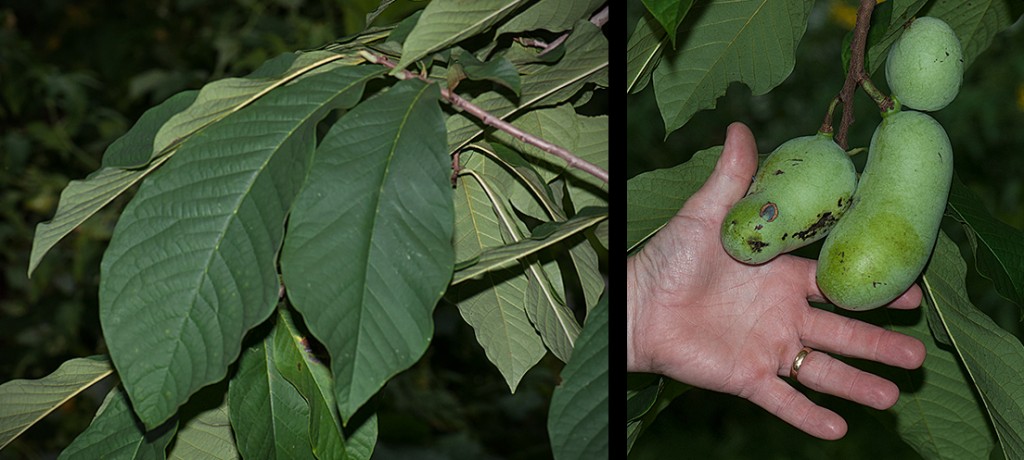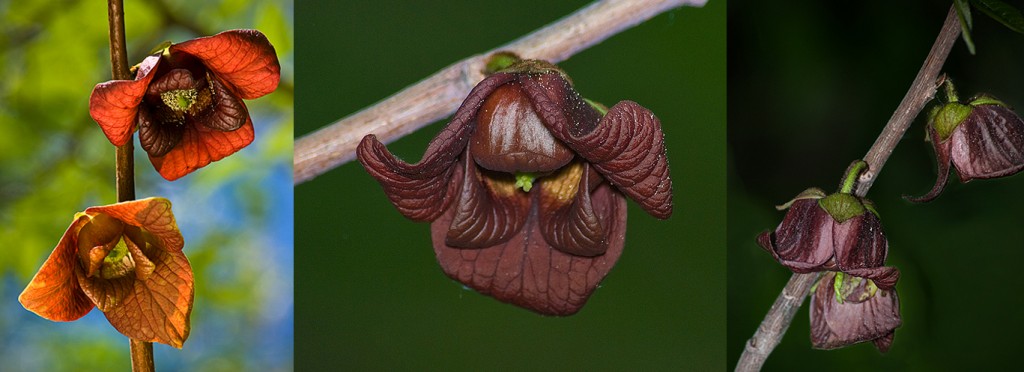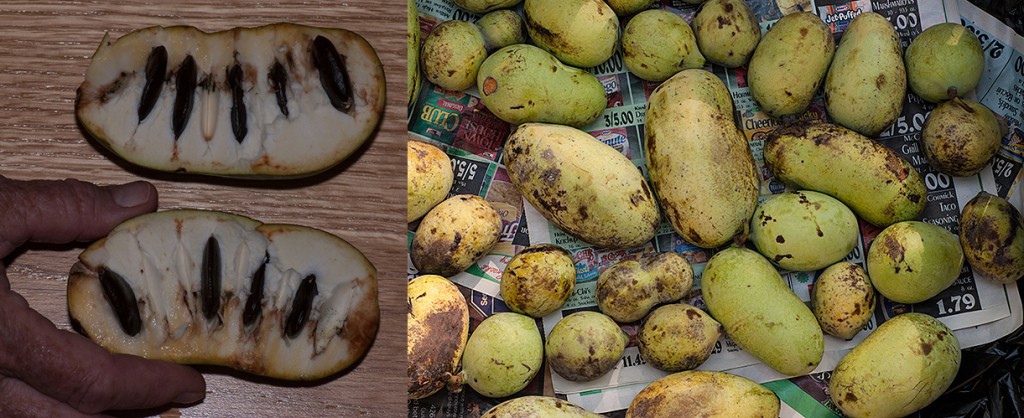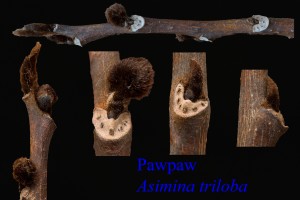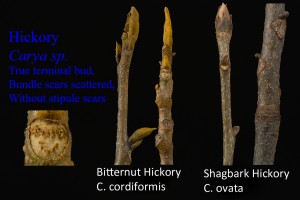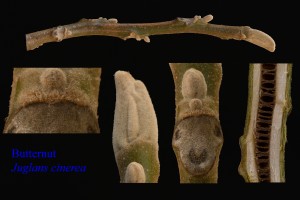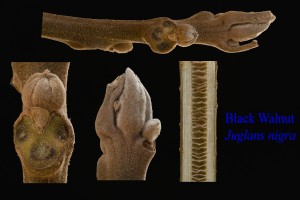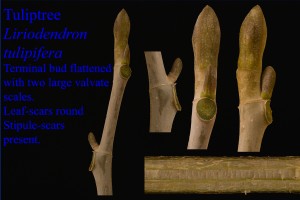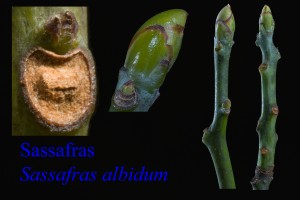Pawpaw or Wild-banana or American Custard-apple (Asimina triloba) occurs in the southern third of Michigan’s Lower Peninsula. We are at the northern edge of its range. It is Michigan’s only member of the largely tropical Custard-apple Family (Annonaceae).
Pawpaw is a shrub or small tree that can bear fruit on plants as little as a meter (3 feet) tall. In Michigan, they normally grow along rivers in floodplains but also occur in rich deciduous forests and swamps.
The dark maroon flowers, with three long outer petals and three much shorter inner petals, appear before the leaves expand, and look quite tropical to me. Their foul smell attracts flies that pollinate them.
The leaves are alternate, broadest near the tip and 15 to 30 cm (6 to 12 inches) long.
Pawpaw has the largest fruit of any native Michigan plant, up to 13 cm (5 inches) long and 2cm (1 inch) thick. It is a large berry containing four to twelve flattened black seeds about the size of a lima bean. The flesh is edible, my favorite wild fruit to eat, although I have friends who hate the taste. The fruiting season is short. Raccoons love them, and have climbed into baskets of Pawpaws as I was carrying them. The picking technique I use is stand to one side of a fruit cluster (so the falling fruit does not hit me), gently shake a small tree and catch the falling fruit. I pick them when they are slightly green but they ripen in a few days.
The Pawpaw Foundation is developing commercial cultivars. Local farmers’ markets sometimes have them for sale. My preference is to eat them raw or cooked into a custard or Pawpaw bread. See the Foundation’s website for recipes.
Now is the time to pick Pawpaws. Get out and explore a river floodplain and look for Pawpaws with their ripe fruit. Only one of these large berries is needed to provide a sample of their unique taste.
Copyright 2013 by Donald Drife
Webpage Michigan Nature Guy
Follow MichiganNatureGuy on Facebook

